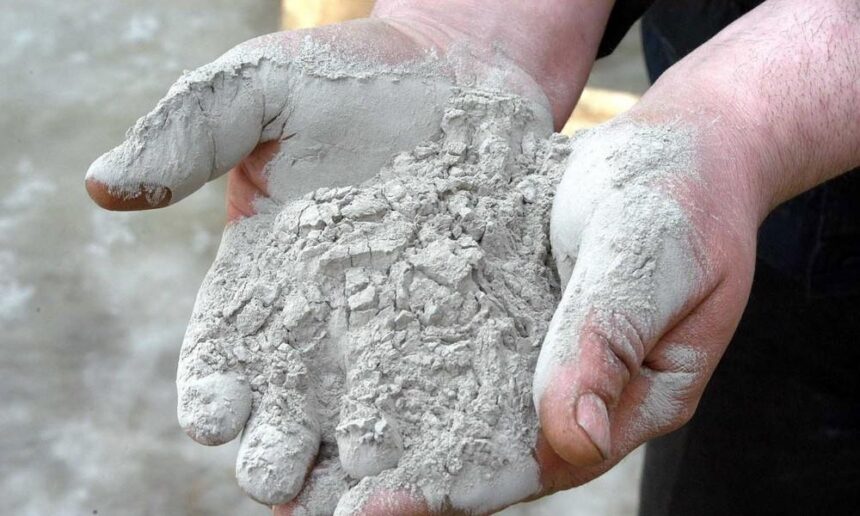The foundation of economic development is infrastructure, which includes transport, communications, energy, roads, bridges, and buildings. The difference between highly developed and developing countries is most clearly illustrated with how well-developed their infrastructure is. And, it is said that the key to advancing the development of infrastructure is cement.
Due to political instability and the absence of coordination in government activities, Mongolia’s policy on its infrastructure has lacked vision and discipline. This has created unhealthy competition, resulting in large investments running deficits, and could create a situation where thousands of people might end up jobless. It can be seen from the cement industry.
Market
Since the beginning of the new millennium, Mongolia’s consumption of cement has doubled every five years to meet the demands of economic growth and increased urbanization. However, the Khutul cement and lime factory, which was the only cement plant in Mongolia, could only produce 200,000-300,000 tonnes of cement annually. Therefore, the rest of the demand was met by imports from China. In 2009, Mongolia imported half a million tonnes of cement, but the number reached 1.5 million tonnes in 2015, which meant that 90 per cent of total cement supply was imported.
When Mongolia’s economy experienced a period of rapid growth with its GDP increasing by 17.6 per cent in 2011, the government was very optimistic about the future and made plans to implement many mega-projects in infrastructure, urban planning, mining, railway, and roads. It was then estimated that these projects would require 16.1 million tonnes of cement within a 5-year period from 2015.
A 2013 study by McKinsey suggested that the cement demand driven by large projects, such as providing housing to 100,000 households and building half of the 7,000-km long Steppe highway, would keep increasing by 22 per cent annually and reach 4.4 million tonnes per year in 2020.

However, there was a change in policy direction politically as the parliament passed laws that put restrictions on foreign investment, which happened at the same time as commodity prices were falling. It deteriorated Mongolia’s macroeconomic environment, forced the mega-projects to slow down, and darkened the bright outlook.
The fever
Four companies set out at the same time to produce enough cement to meet the demand from mega-projects domestically, without needing to import cement from abroad. These companies included Moncement and MAK Khutul, both of which were local Mongolian companies, and Munkhiin Bayan Gal, which was founded by the Chinese state-owned CUCC company. They all built a cement factory with the capacity to produce one million tonnes a year and commissioned them one after another in 2015-2016. By 2018, these four factories were able to substitute cement imports and started supplying 90 per cent of total cement demand domestically.

Source: http://www.ecustoms.mn/statistics/
These factories use technologically advanced processes, which has allowed them to significantly improve the quality of cement, lengthen the life of infrastructure, and be able to make customized blends as per requirements from clients. For example, Moncement is supplying the Oyu Tolgoi underground project with a special blend of cement used in ground support.
Due to a fall in prices of mining exports, reduced foreign direct investment, and an increasingly unclear legal framework, Mongolia’s construction sector has experienced a slump in its growth. As a result, our cement consumption has not exceeded 1-1.5 million tonnes a year. But an upward trend has been observed since 2017, when commodity prices increased.
Series of hits
The value of the tugrug has halved in the last six years. Within the same time period, cement sales slowed down as factories started running deficits. In March 2012, one USD could buy 1,410 MNT and one tonne of cement cost 120 USD. In November 2018, one USD can buy 2,600 MNT and one tonne of cement costs 60 USD. Given that our cement factories were built with investments in USD, their sales revenue was halved because of tugrug devaluation, which has made it extremely difficult for them to repay their loans as their return on investment has been reduced significantly.
Another area where the cement factories were hit was the cost of electricity. Approximately 20 per cent of their operational costs go on electricity, but its price has almost doubled in the last six years. In 2011, the electricity tariff stood at 100 MNT per kilowatt hour. It increased to 192 MNT in 2017. In addition to electricity, railway tariffs increased by 26 per cent in the last three years, and the price of diesel fuel increased by an abrupt 45 per cent in 2018. This means that the cost of transport and fuel for cement factories has soared by 25 per cent in the last three years.
In 2013, the government made a decision to encourage investment through tax-related and non-tax related incentives. As a consequence, the law on investment was revised to exempt construction projects from customs taxes when they are importing their equipment, and impose zero value-added tax on them. However, the Customs General Administration has not been compliant with this change and has made businesses who made investments in this sector face a huge amount of uncalculated costs. Investors now doubt Mongolia’s legal framework and how it is enforced.
A solution
The projects that drove McKinsey’s study did not end up being implemented. None of the electric power plants were built, and neither was one single kilometre of railway.
Under these circumstances, the four cement factories have run out of options and have been selling their cement for less than their unit costs. They are willing to do anything that could help them avoid stopping their operations. Construction companies are bartering apartments they are building for the cement and other materials they need. The entire value chain of our construction industry is suffering from a complete shortage of cash.
A potential solution is to cover the roads with concrete instead of asphalt. Concrete roads get fewer cracks, are less prone to damage from fuel leaks, and have a lifetime of more than 30 years, which is 50 per cent longer than asphalt roads. From 2015 to October 2018, Mongolia spent 6.5 million USD to import 13,745 tonnes of bitumen to build asphalt roads. When it comes to the public budget, they do not care about how they are building the road and end up spending one billion MNT to build one kilometre of road.
Following the traces…
What is happening with our cement industry is a clear example of the challenges Mongolia is facing to develop its industrial sectors as we still transition to a market economy.
When the government restricts or tries to stabilize prices, the medium- and long-term outcome is highly damaging to industries that need large investments. This is why our manufacturing industries, except for mining, are not developing in Mongolia. The power over the public budget is too centralized, and we are running a budget deficit every year, which makes it impossible to reduce government debts.
Also, the authorities are working towards their own interests. They make the government issue bonds in foreign markets and establish various domestic funds to raise capital for the companies they own. In addition, they have been making the market dysfunctional under the name of price stabilization.
When Mongolbank started allowing for heavily subsidized housing mortgages in 2013, the price of housing doubled in the market. As a result, we have 66,000 unsold, empty apartment units in the capital city today, while 200,000 households are having to use pit toilets and burn coal, which continues worsening the quality of air. If the government had not gotten involved, the construction industry would have had no other choice than to build the right number and type of apartments as per the demand from the market.
Our economy will get on the right trajectory and achieve infrastructure development only when our government is free of corruption and when prices are set by the market, not by the state.
2018.11.28
Trans. by B.Amar












